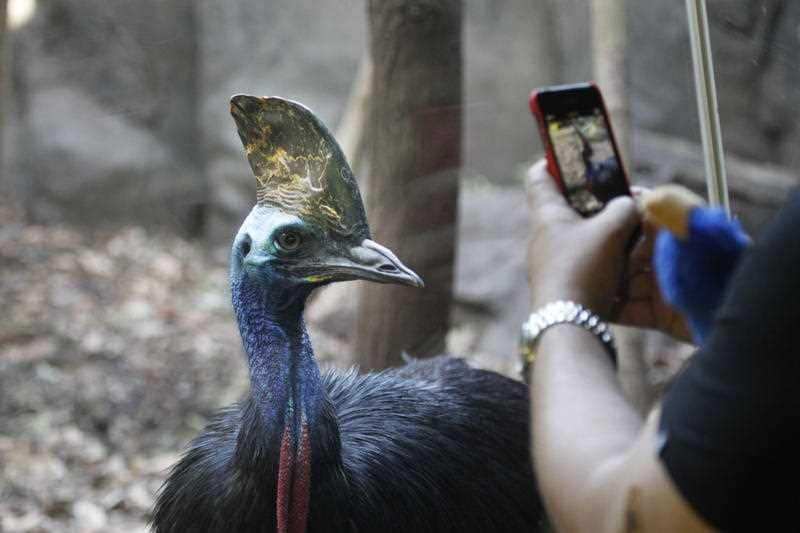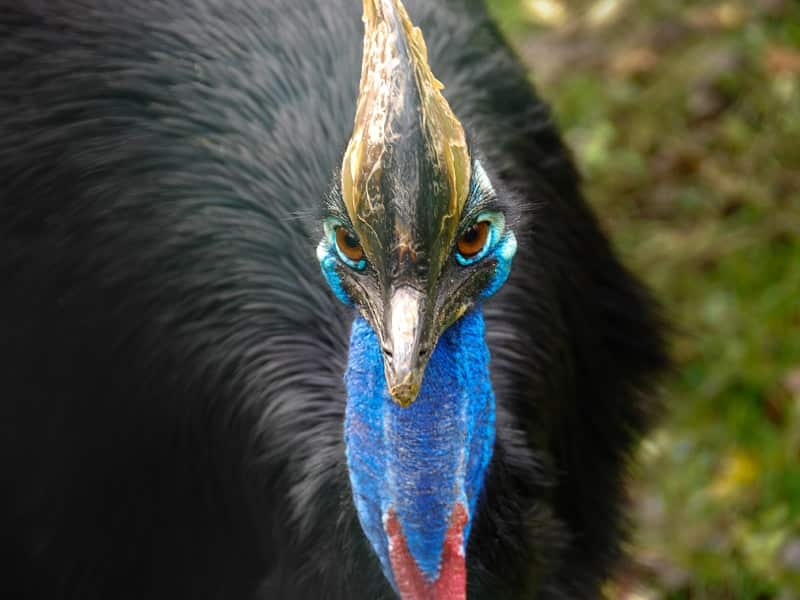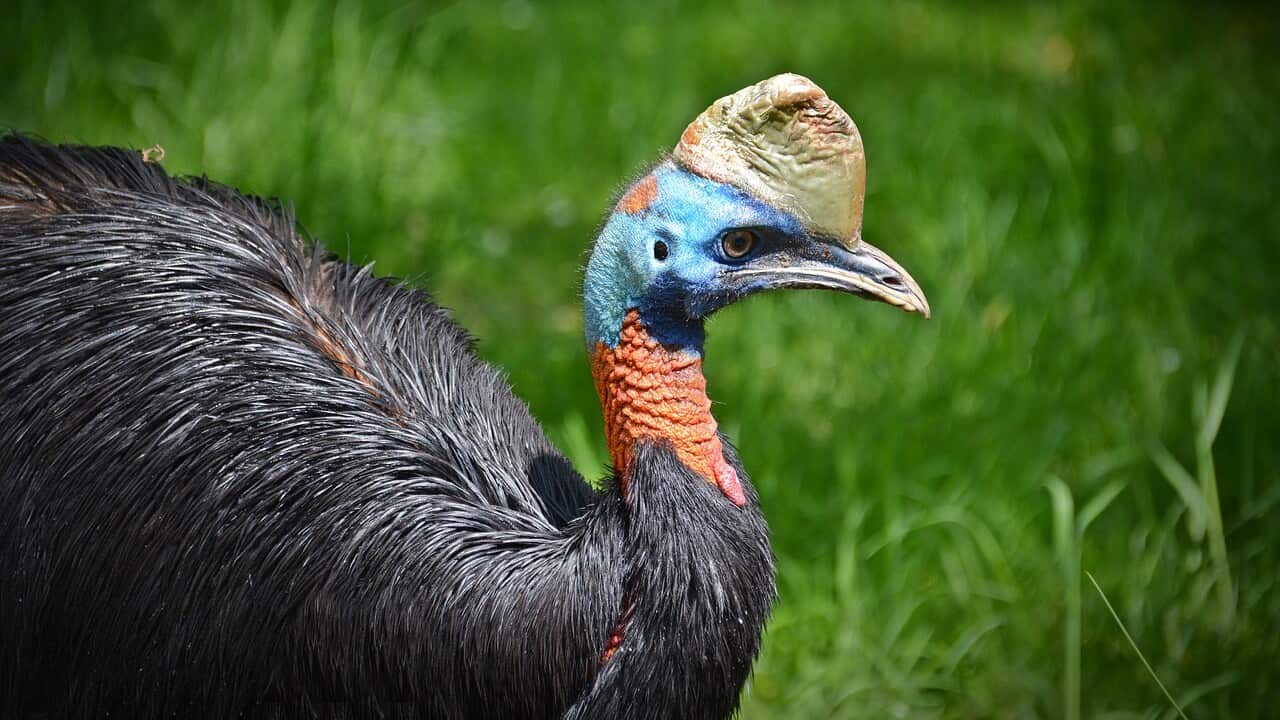It is a question that has baffled scientists for two centuries, and now Victorian researchers believe they have found the answer to the meaning of the southern cassowary's distinctive helmet.
In a report published on Wednesday, La Trobe University researchers have revealed that the horn-like growth, known as a casque, is likely used to help the birds keep cool during Australia's hot summers. Danielle Eastick, from the Department of Ecology, Environment and Evolution, measured 20 captive cassowaries across Australia and found that the birds released less heat from the casque in cold weather, and the greatest levels when temperatures hit 36 degrees.
Danielle Eastick, from the Department of Ecology, Environment and Evolution, measured 20 captive cassowaries across Australia and found that the birds released less heat from the casque in cold weather, and the greatest levels when temperatures hit 36 degrees.

A cassowary at Sydney Wild Life Zoo. Source: AAP
“Our results are quite compelling and it’s highly probable this is what the casque is actually used for,” Ms Eastick said.
"It’s really exciting to think we may have solved a mystery that has baffled scientists for so long."
The report said cassowaries, as large-bodied, dark feathered birds that live in tropical climates, have a strong need to offload heat.
"Many animals have evolved morphological structures, or adapted existing body regions, known as ‘thermal windows’, for heat exchange," the report reads.
"The cassowary casque meets the characteristics of thermal windows: uninsulated and vascularised." Previous speculation suggested the casque may have been used as a protective structure for moving through dense vegetation, as a weapon against other animals or as a means for attracting a mate.
Previous speculation suggested the casque may have been used as a protective structure for moving through dense vegetation, as a weapon against other animals or as a means for attracting a mate.

Conservationists are attempting to educate the public on the plight of the southern cassowary. (AAP) Source: SBS
"The casque has caused considerable curiosity and speculation for nearly two centuries and animal experts have proposed various theories," Ms Eastick said.
"Just as humans sweat and dogs pant in hot weather or following exercise, cassowaries offload heat from their casque in order to survive. The hotter the ambient temperature, the more heat they release."
Cassowaries are one of the heaviest native land animals in Australia and can live up to 40 years in the wild, and 60 years in captivity.
But the new findings don't only shed light on the famous, flightless birds.
Ms Eastick pointed out that many dinosaurs had casques and it is possible they also used them to regulate their temperatures.
Share




